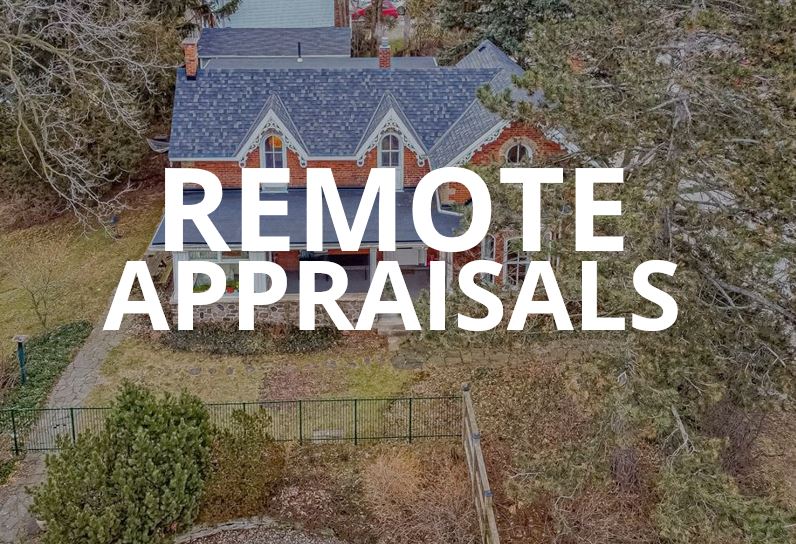Virtual home inspections are safer (and sometimes easier).
From time to time, whether because a property is in a remote location or due to time constraints, real estate appraisals are conducted remotely. Ideally, of course, an appraiser is able to make a physical inspection of a property, but when that’s not possible, how do you handle it?
Video calls are a good first step
While some appraisers and financial services companies allow homeowners to provide their own photos of the home interiors, we’re seeing the increasing use of Zoom (or similar videoconferencing tools) for inspections: The homeowner or agent can carry a mobile phone or laptop around a property, while the appraiser, watching on his/her screen, can provide direction (“Can you give me another look at that hallway?” or “Please zoom in on that corner”) in real time. The appraiser can also record the video tour for future reference or even to attach to the digital file provided to the financial services company.
How to prepare for a remote inspection
As we’ve discussed before, generally speaking, a professional appraiser isn’t going to base his estimation of value on how tidy your home is or whether your living room has up-to-date accent pillows. However, there are some ways that homeowners should prepare for remote inspections.
Floorplan: While homes in some newer developments will have standardized floorplans with which the appraiser might be familiar, older or unusual homes may need more explanation. If your appraiser is using a video call to ‘tour’ the home, it will be important to make sure they see enough to get an idea of the floorplan; if you are providing photos without video, it makes sense to draw a rough floorplan. This doesn’t have to be complicated or even to scale: Draw it on a piece of paper, take a photo on your phone, and send it along with the other home photos.
Finishes and upgrades: Be prepared to identify upgrades (marble countertops, a shower added to a basement bathroom, high-end insulated windows, etc.) and improvements to the property such as landscaping. It’s also helpful to be able to provide accurate costs for these upgrades (and receipts for the work done if possible).
It’s useful to be able to answer questions like the age of the furnace and HVAC system, when the roof was last replaced/reshingled, when the driveway was installed or last resurfaced, any major repairs or renovations of plumbing or electrical systems, etc. If you keep a file folder with documentation of improvements you’ve made to your home, have it handy to refer to if the appraiser asks questions about certain items.
Photos/videos: If the appraiser isn’t doing a video walkthrough, make sure you gather detailed photos/videos of every room, hallway and entry. Make sure the images show flooring, walls, and ceilings. Providing closeups of specific significant items can be helpful, but it’s more useful to the appraiser if you ensure that room photos have sufficient perspective to provide an overall view. In other words, one photo that captures all of a bedroom in one shot is better than 5 photos that each only show a corner.
Some appraisers continue to do exterior inspections. If your appraiser isn’t visiting the property, it’s important to include detailed photographs or videos of the exterior as well.
Ensure no people are in the photos/videos: Photos and videos of the interior and exterior of the home should not contain any people, especially minor children. People can block the view, but more importantly it’s a privacy issue: Appraisal photos are confidential, but they will be examined by the appraiser and possibly staff members at the appraiser’s office, as well as staff at the financial institution providing the mortgage, and are kept on file for several years. (And we’ve all seen the photos with an embarrassing accidental reflection in a mirror!)
Remember this is new for everyone
Home appraisals have always been stressful for the homeowner or home buyer, because in many cases a whole lot is riding on the value the appraiser sets for the home. Remote inspections aren’t making it easier, and require more effort both on the part of the homeowner and the appraiser, as well as a shift in thinking on the part of the financial services provider. Like so much else about our ‘new normal’, it’s important to approach the process with a bit of patience.


